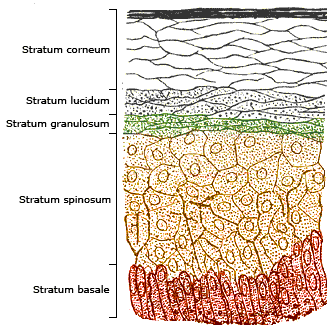phillybadboy
Forum Crew Member
- 59
- 0
- 0
how does epidermis get oXygen when there no blood vesSels running through it? also if you get a cut to the epidermis but no deeper than the epidermis would the scab turn dark or black or just stay yellow?
Follow along with the video below to see how to install our site as a web app on your home screen.
Note: This feature may not be available in some browsers.

so some cells of the epidermis is alive? if so how does it recieve oxygen? i know it can get some nutrients by diffusion, but how does it get oxygen if red blood cells can't diffuse leave the blood vessels?
...The epidermis is comprised of dead cells. It doesn't need blood vessels.



i guess my real question is how the cell groups without blood vessels recieve oxygen when red blood cells are too big to leak out of blood vessels, does hemoglobin or oxygen diffuse out?
*facepalm* Yes there is something of a mild oxygen diffusion gradient. It's a very low degree of diffusion because skin does not require a large amount of oxygen at all which is why you can place a tourniquet on a limb for several hours to a day and have no significant complications (and even when they do it's normally the muscles that are the source of the problem and not the skin). No hemoglobin does not "leak out" because they would require the erythrocytes (red blood cells) to rupture. This is called hemolysis and is a bad thing if it occurs with any regularity.i guess my real question is how the cell groups without blood vessels recieve oxygen when red blood cells are too big to leak out of blood vessels, does hemoglobin or oxygen diffuse out?
thank you, oxygen. diffuses .transported in plasma
Something not well covered in Basic class (or for that matter, some medic classes) is that O2 does not unload directly off of RBCs into the cell. It unloads off of RBCs into the plasma, and the into the cells. This is how diffusion occurs, and
